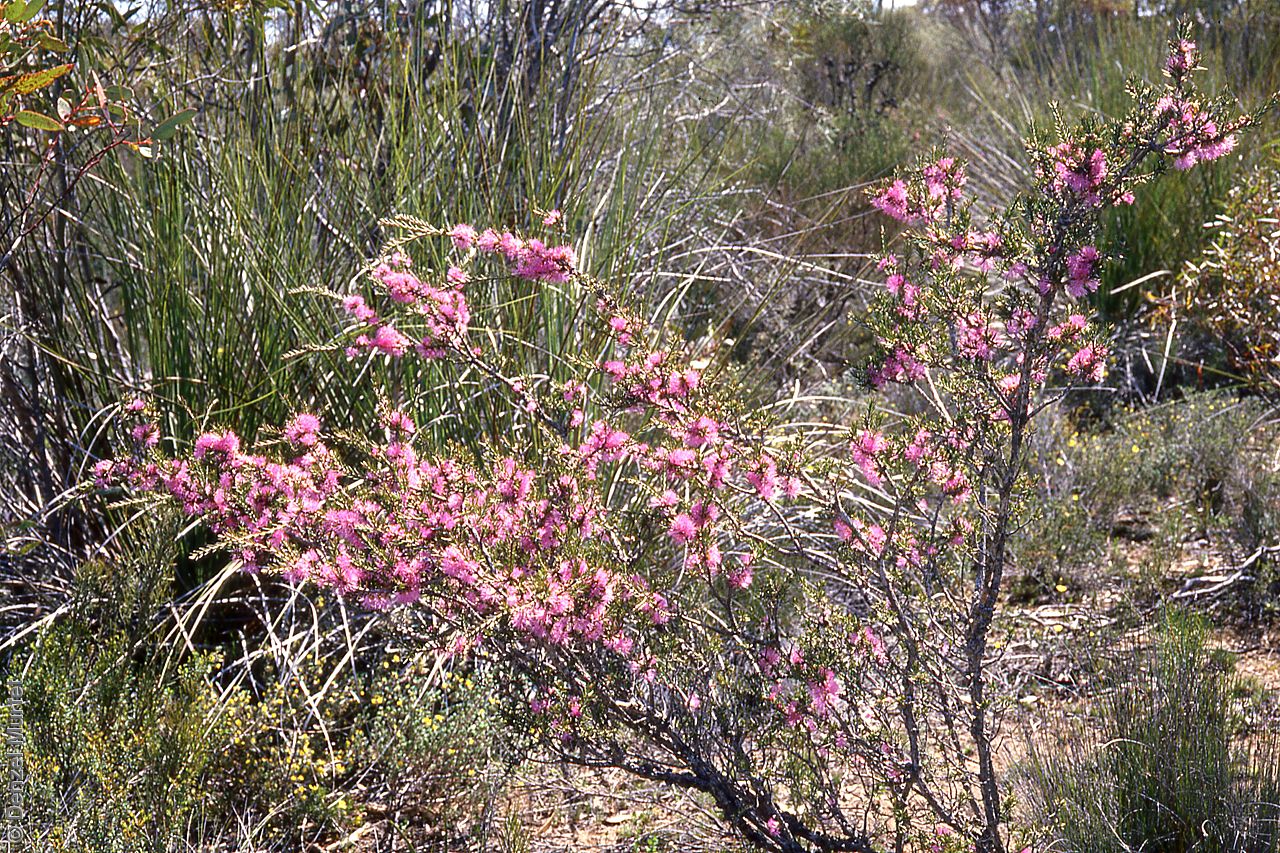
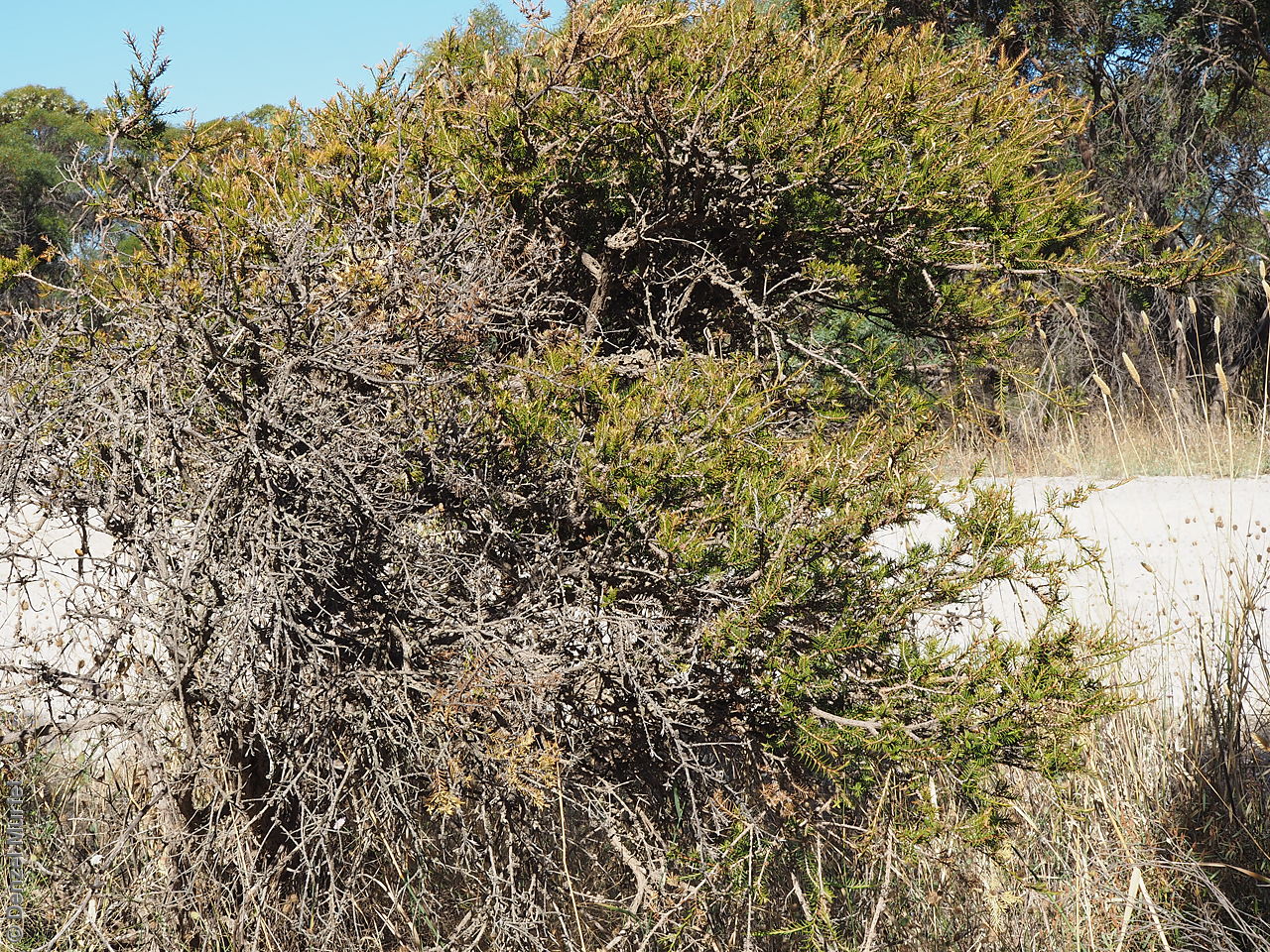
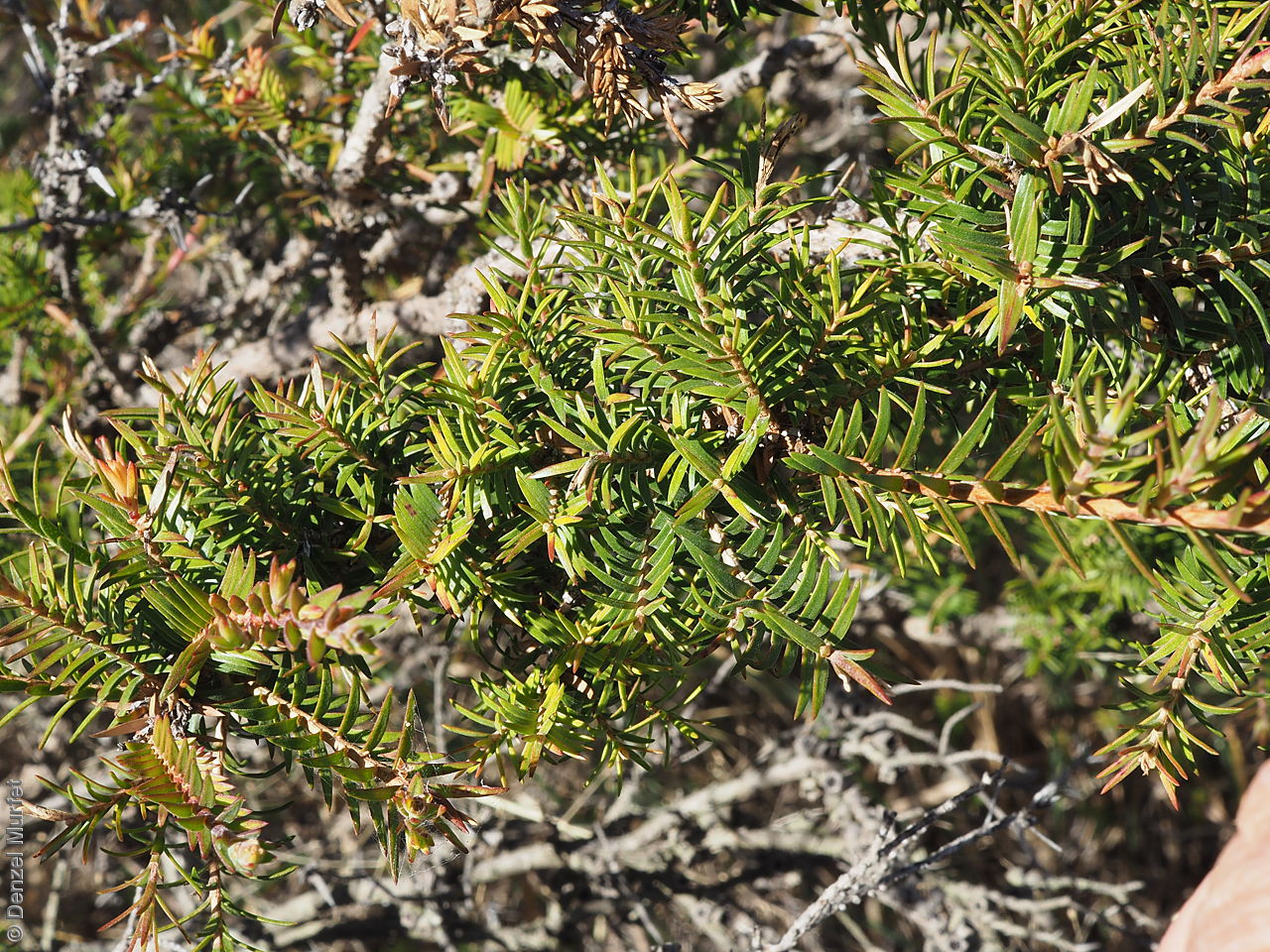
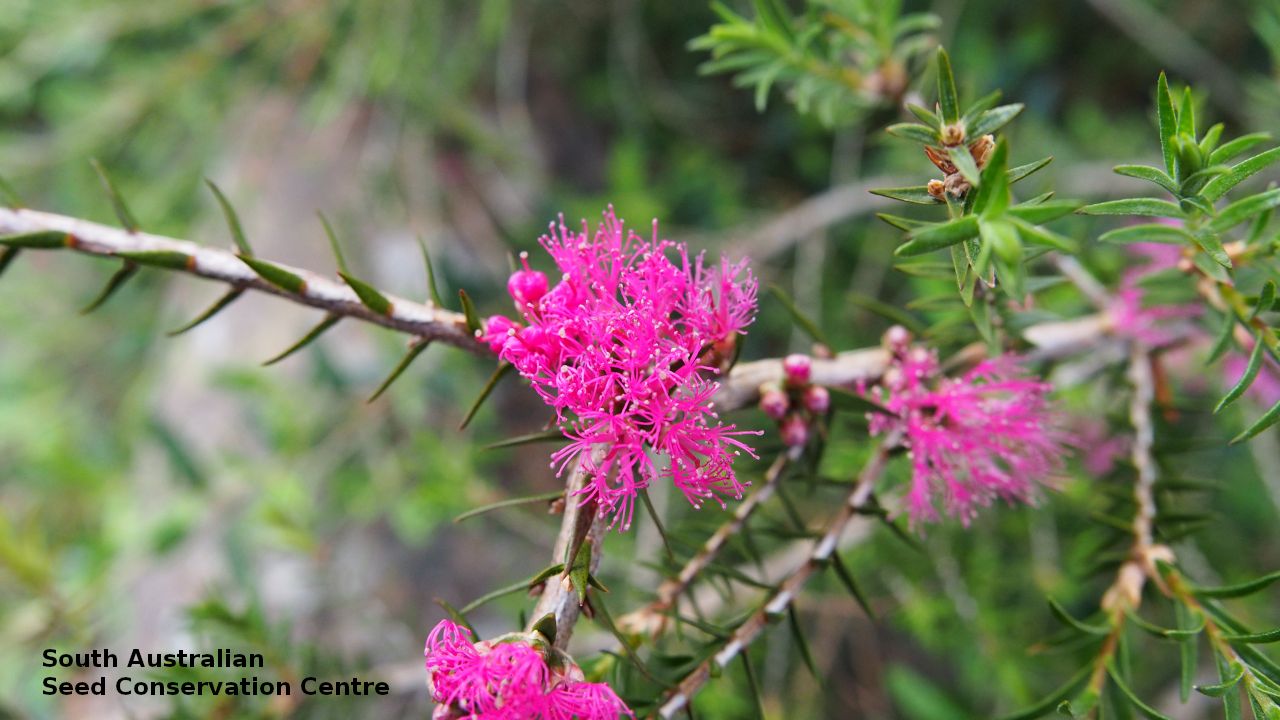
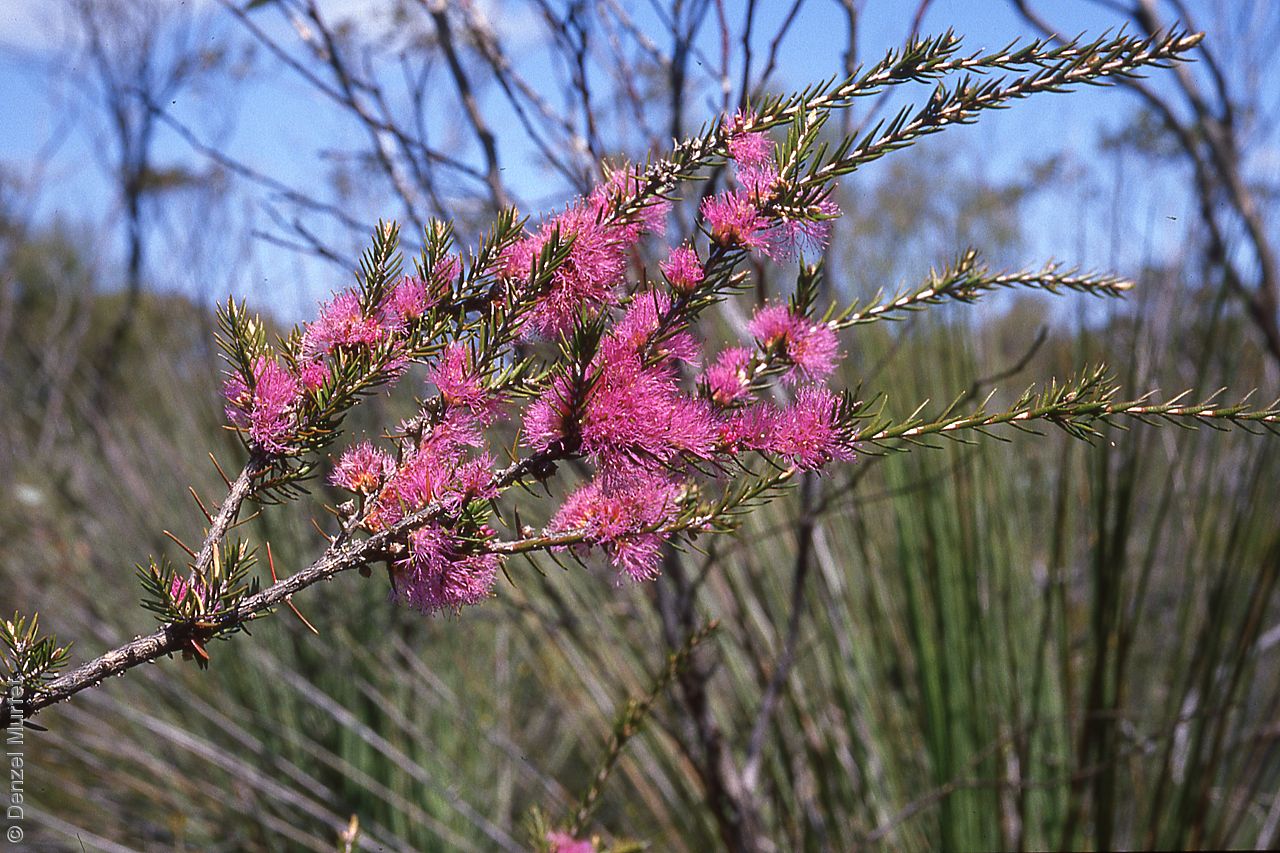
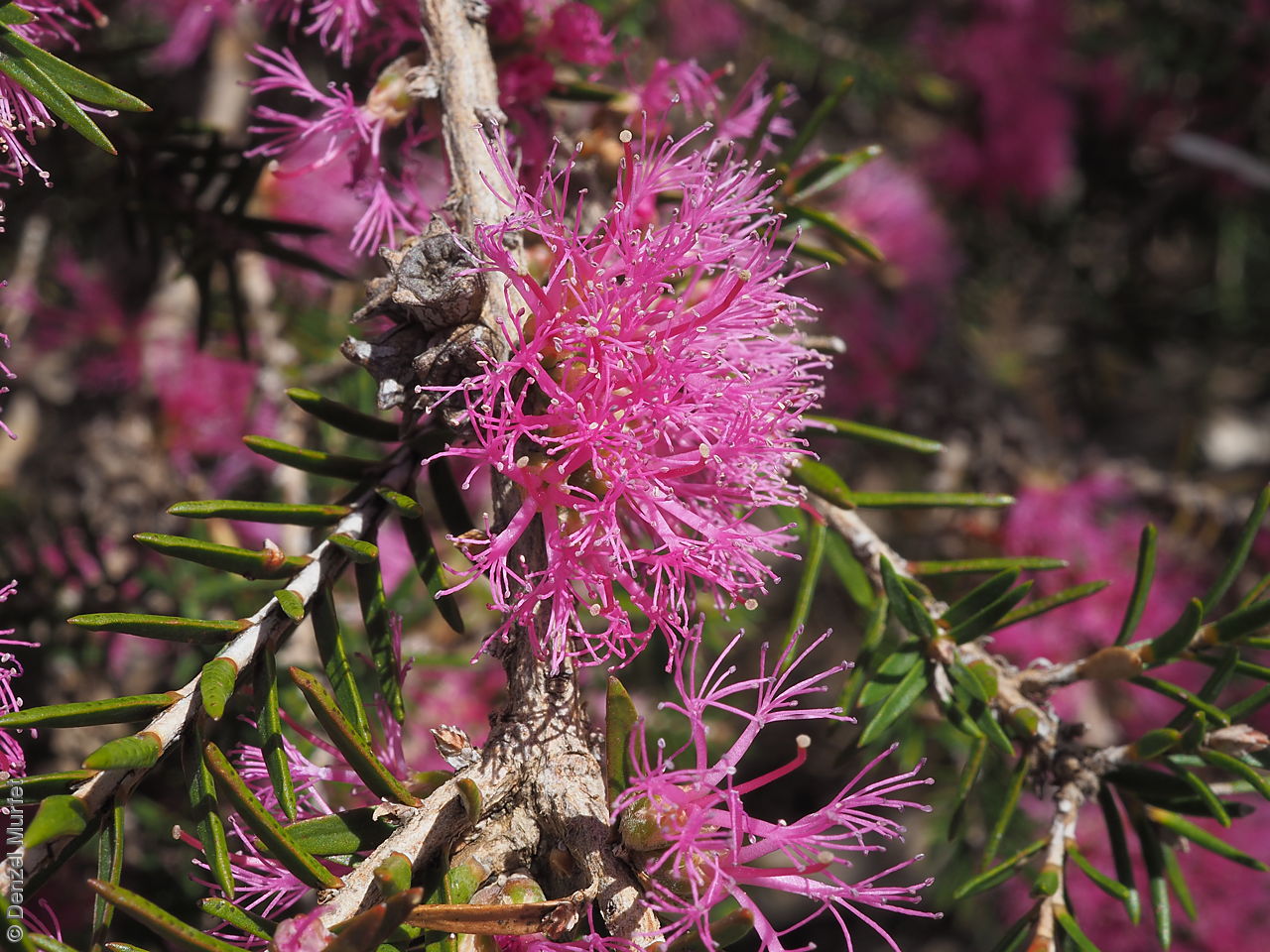
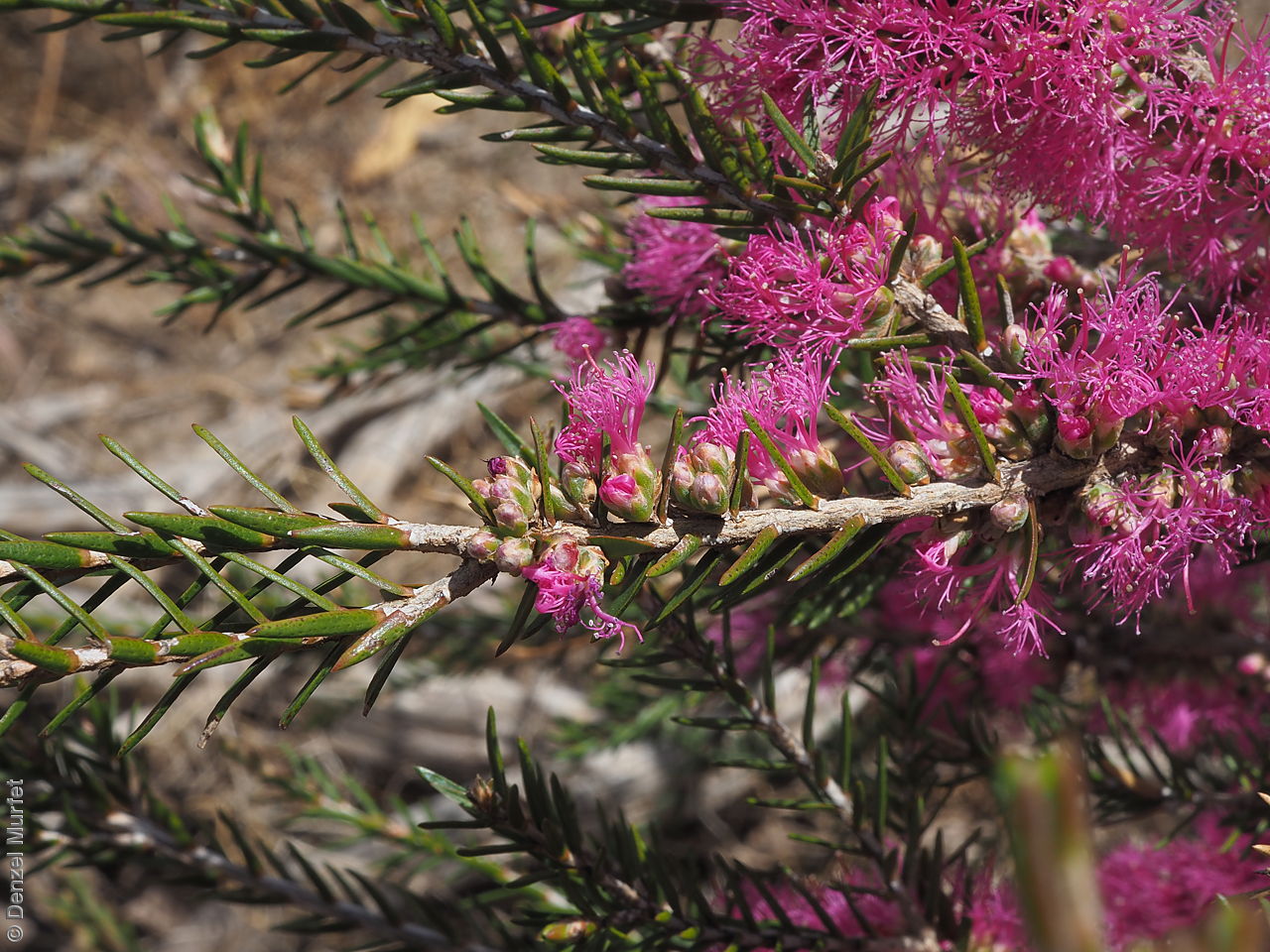
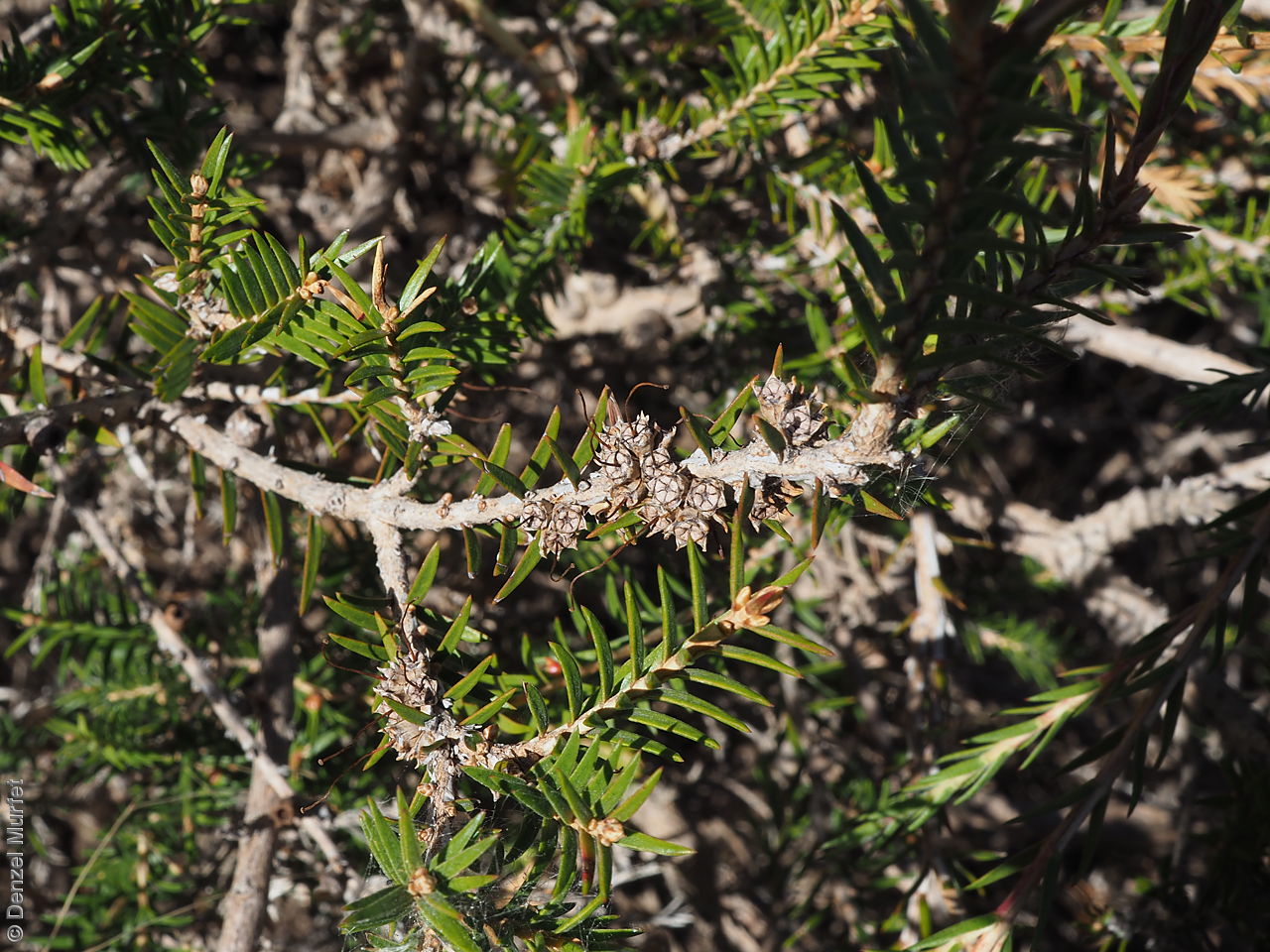
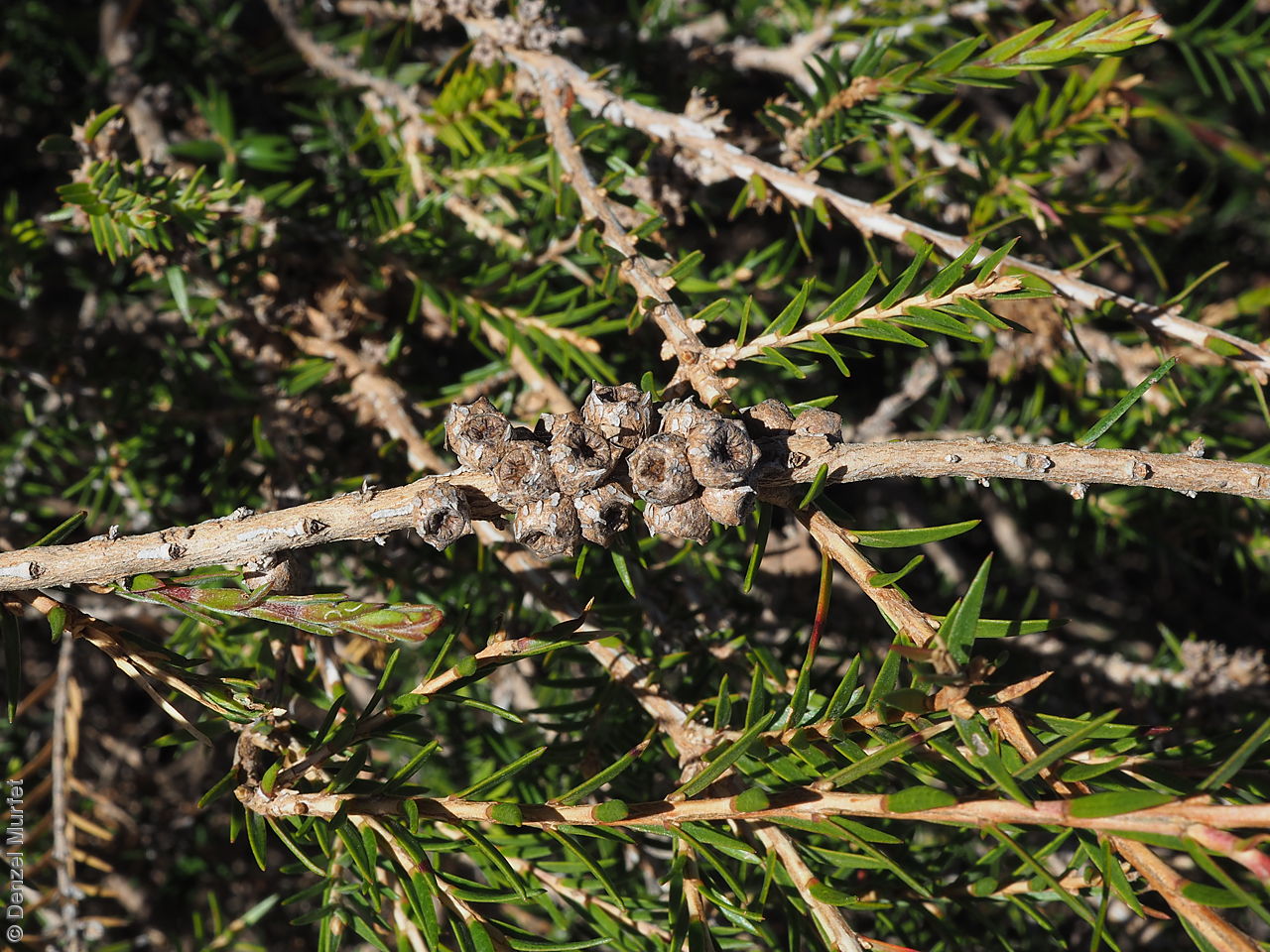
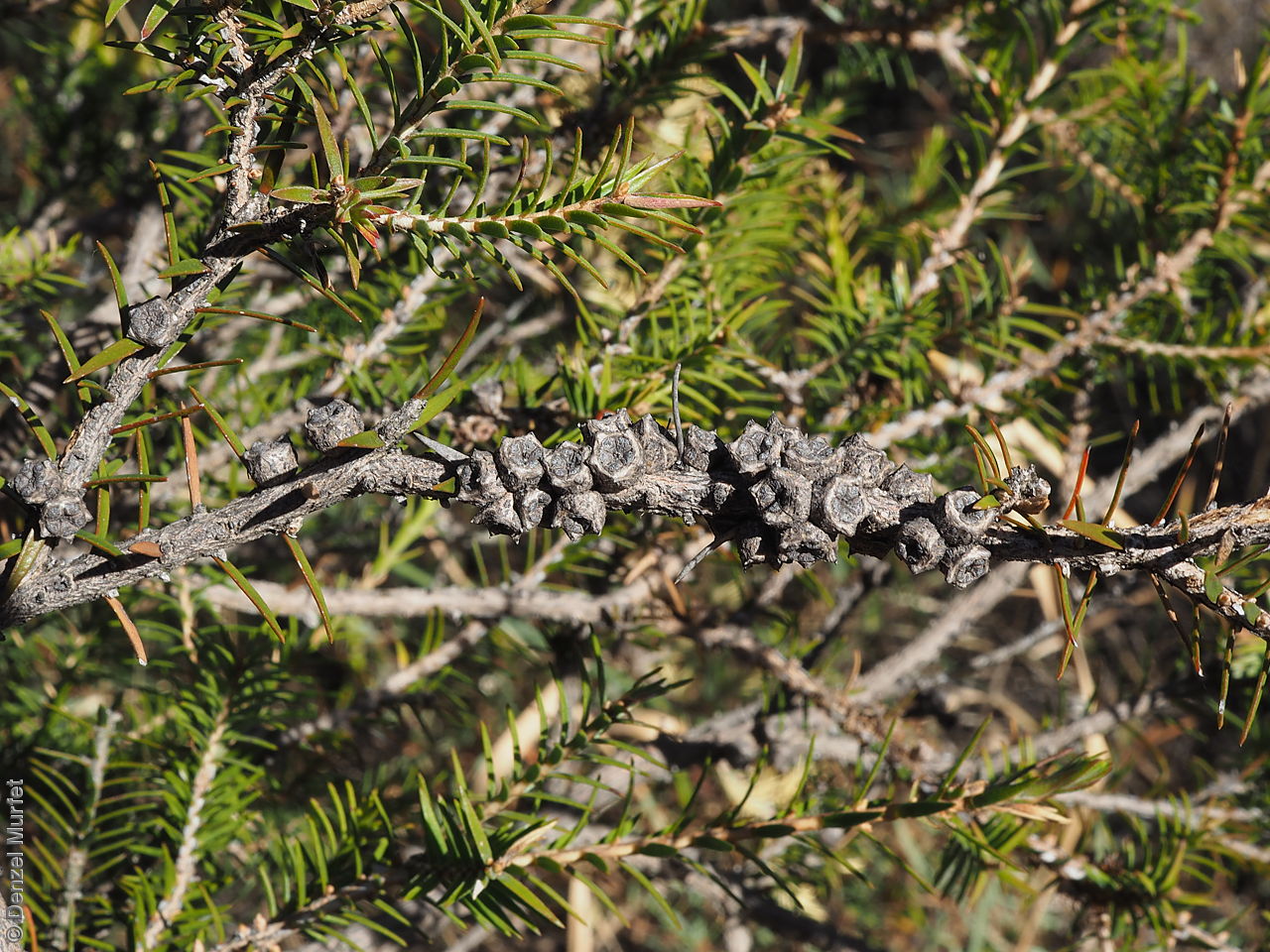
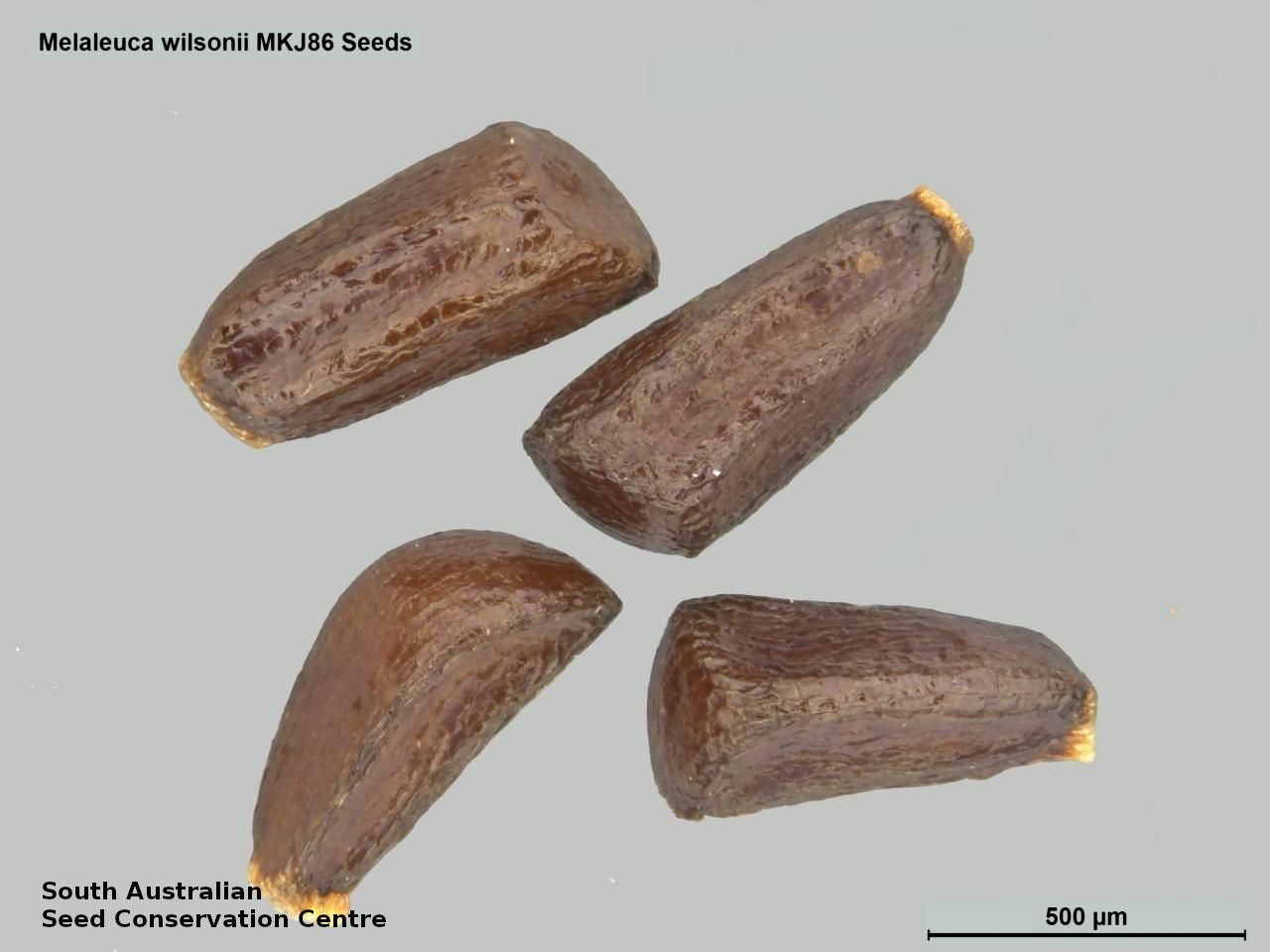


Botanical art
Common names
Violet Honey-myrtle
Wilson's Honey-myrtle
Etymology
Melaleuca, from the Greek 'melas', meaning black and 'leucon, meaning white, alluding to the contrasting colours of the bark of the first species described, which is said to have had white branches against a black trunk. Wilsonii named after Charles Wilson, a friend of Ferdinand Mueller, who named the species.
Distribution and status
Found in South Australia only in the upper South-east, between Coonalpyn and Bordertown, growing on seasonally inundated, poorly draining, sandy or clay soils in mallee or dry woodland communities. Also found in Victoria. Native. Rare in South Australia. Common in Victoria.
Herbarium region: South Eastern
NRM region: South East
AVH map: SA distribution map (external link)
Plant description
Spreading shrub to 1.5 m high and 2.5 m diameter wide; glabrous except for the pubescent young shoots and young fruits. Leaves decussate; linear-lanceolate, to 15 mm long and 2 mm broad; acuminate-acute, obscurely 3-nerved and glandular below; sessile. Inflorescence in lateral clusters of 2-5 pale to deep pink flowers on a very short axis. Flowers in spring. Fruits are grey-brown, corky capsule to 5 mm long and 5 mm diameter, toothed at the rim by persistent sepals, in clusters on old wood. Seeds are tiny brown rectangular to cylindrical seed to 0.7 mm long and 0.3 mm wide. Seed embryo type is folded.
Seed collection and propagation
Collect seeds between January and December. Collect capsules that are large and hard, with closed valves. Place the capsules in a tray and leave to dry for at least two weeks or until all the valves are open. Then place all the capsules into a bucket with a lid if possible and shake hard to dislodge the seeds from the capsules. Use a sieve to separate the seeds from the capsules. The fine material will contain the seeds and other flowering material. It is very difficult to separate the seeds from this other material as the size, shape and weight are very similar, however the seeds will be a darker brown. Store the seeds with a desiccant such as dried silica beads or dry rice, in an air tight container in a cool and dry place. From one collection, the seed viability was high, at 85%. Seeds are non-dormant, viable seed should germinate readily.
| Location | No. of seeds (weight grams) | Number of plants | Date collected | Collection number Collection location | Date stored | % Viability | Storage temperature |
|---|---|---|---|---|---|---|---|
| BGA MSB | 302,700 (26.5 g) 290,800 (25.3 g) | 60 | 12-Oct-2005 | MKJ86 South Eastern | 8-Aug-2006 | 95% | -18°C |
Number of plants: This is the number of plants from which the seeds were collected.
Collection location: The Herbarium of South Australia's region name.
% Viability: Percentage of filled healthy seeds determined by a cut test or x-ray.